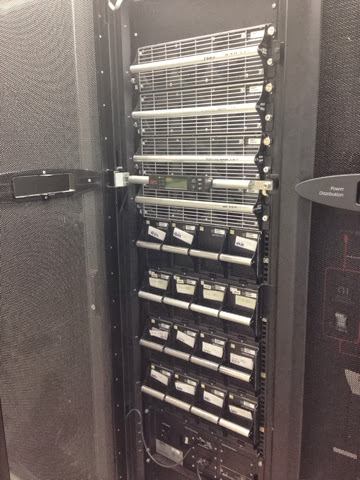Creating Custom Monitors in SCOM
One of the awesome things about OpsMgr is that if you can't
find a management pack to do something you need done, you can write your own.
At a basic level, you don't need to write a whole management pack. If writing
your own MP is akin to writing a cookbook, making a custom monitor is like
writing a simple recipe. We're going to write a basic custom monitor in the
instructions below.
The first thing you'll want to figure out is what you want to accomplish with your custom monitor. Having a goal in mind will ultimately shape how you build your monitor.
In the Authoring section, under Monitors (found under
Management Pack objects), right-click, select “create a monitor” and then select
“Unit Monitor…”
The “Create a Unit Monitor” wizard will open. From here, you
can choose the type of monitor you wish to create. This is really where your
end-goal comes in to play. Do you want to monitor a service on s specific
machine? Do you want to watch the event logs for a specific event? These are
the usual monitor types we have in our environment. In this example, I'm
choosing to monitor a service. Before I can proceed, I have to add this monitor
to a Management Pack. If this was a new monitor for a certain task I was
already doing then I could select an MP and be on my way. In most cases, it's
best to assign your custom monitors to their own MP. Making an MP is easy and
often a necessary part of creating your custom monitor.
Click the “New…” button next to “Select Management Pack”. In
the Create a Management Pack wizard, you should name your management pack
accordingly. I usually make an MP specific to the custom monitors I'm setting
up and name them that way. As you tune and tweak your monitor, you can keep a
change-log in the description of the MP. Once you've put in the name and
description, click the “Next” button and then click “Create”
When the MP wizard closes, you'll be back at the Unit
Monitor wizard. Go ahead and click “Next”. At this point, you can give your
monitor a name, a description, choose a monitor target and which parent monitor
you'll use (It'll default to “Availability”). Click “Next”.
From here, you can select the service you want to monitor
and on what machine. Click the “…” button.
The computer will default to the management server so you'll
need to select the server that you want to monitor and then you can select the
server. Once you've specified the server and service to watch, click “OK” and then
“Next”.
You can specify the health-state of when the service is
running and when the service isn't running. It'll default to Healthy when the
service is running and Critical when the service isn't running or has stopped.
When you've adjusted these to your needs, click “Next”.
You can also specify whether or not you want notifications
from this monitor. This is off by default but you can check the box to enable
alerts. Once you've gotten the alerts configured to your needs, click “Create”.










Comments
Post a Comment